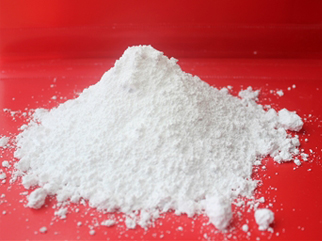Mumal Microns is produces Precipitated Calcium Carbonate Powder which is white ultra fine crystalline powder having consistent Particle Size Distribution and Excellent dispersibility. PCC is synthetically processed from naturally occurring high grade lime stone. The major advantage of the product is its availability in different bulk densities from 0.40 gms/cc to 0.9 gms/cc, with brilliant white color, depending upon the requirement of end user.
Precipitate Calcium Carbonate is manufacturing calcinations of selected best quality limestone with hightest percentage of calcium carbonate with low magnesia, Silica, Iron & other natural impurities. Oxide so obtained is slacked to produce lime solution further carbonated into precipitated calcium carbonate in controlled conditions.
Precipitate Calcium Carbonate process ensures that the material is purified, refined, free from heavy metals, asbestos and other silicaceous minerals. PCC improve the drawback of GCC.
Precipitate Calcium Carbonate is used as paper coating for premium quality paper products, Rubber Industries, PVC/ Plastic industries, Flattering agent in Paint Industries, In thermal & electrical Insulators, For making Tooth Paste, Pharmaceuticals, Food Industries etc.
| 1. | Calcium as CaCO3 | 96% |
|---|---|---|
| 2. | Silica as SiO2 | 1.40% |
| 3. | MgO | 0.90% |
| 4. | Al2O3 | 0.20% |
| 5. | Iron as Fe2O3 | |
| 6. | Brightness | 94% |
| 7. | Bulk Density (Loose) | 0.90( grm/ ltr) |
| 8. | Bulk Density (Taped) | 1.20 (grm/ltr) |
| 9. | 240 Mesh | 99.50% Passing |
| 10. | PH Value | 9.5 |
Precipitated Calcium Carbonate (PCC) is an innovative product derived from lime, which has many industrial applications. PCC is made by hydrating high-calciumquicklime and then reacting the resulting slurry, or “milk-of-lime”, with carbon dioxide.
PCC stands for Precipitated Calcium Carbonate — also known as purified, refined or synthetic calcium carbonate. It has the same chemical formula as other types of calcium carbonate, such as limestone, marble and chalk: CaCO3. The calcium, carbon and oxygen atoms can arrange themselves in three different ways, to form three different calcium carbonate minerals. Calcium carbonates, including PCC, are considered to be non-toxic. In the U.S., the Food and Drug Administration has Affirmed calcium carbonate to be GRAS (Generally Recognized As Safe). As long as the PCC meets certain purity requirements, it can be used as a direct food additive, as a pharmaceutical or as an indirect additive in paper products that come in contact with food. Similar acceptances and approvals exist around the world where PCCs are widely used in these applications.
A method of preparing precipitated calcium carbonate which comprises slaking quicklime in an aqueous medium, passing the suspension of calcium hydroxide through a sieve having an aperture size in the range of 40 to 70 microns, carbonating the calcium hydroxide and separating the calcium carbonate from the aqueous medium in which it is suspended. The sieved calcium hydroxide is subjected to high energy, high shear agitation which is terminated prior to carbonation. During the carbonation, the suspension of calcium hydroxide is subjected to relatively lower energy and shear agitation compared to the previous high energy, high shear agitation.
